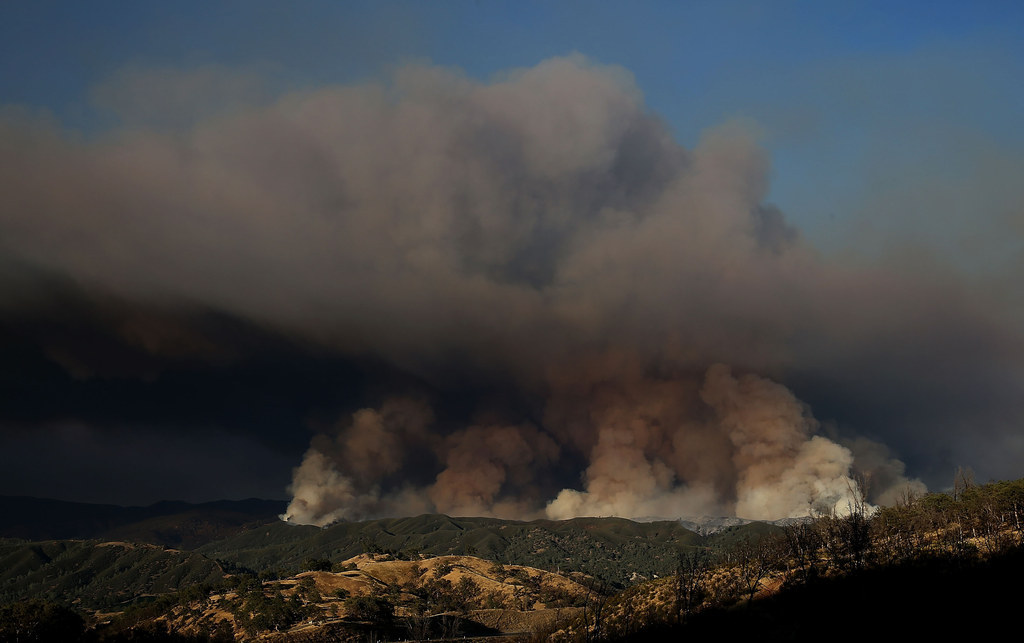
California is burning, but it's not just homes and forests going up in smoke. It's also dollars. Lots of them.
A series of ongoing wildfires has burned more than 300,000 acres in the Golden State. The largest, dubbed the Rocky Fire, has charred more than 68,000 acres — more than twice the size of the city of San Francisco.
In Alaska, hundreds of wildfires have burned millions of acres, prompting the National Oceanic and Atmospheric Administration to declare 2015 the state's worst fire year on record. Wildfires have also scorched large parts of Oregon, Washington, Utah, and other western states.
In a report released Wednesday, the U.S. Forest Service revealed that it now spends more than half of its annual budget fighting wildfires, pushing the agency to a "tipping point." That's up from only 16% of the budget in 1996.


Worse still, the agency believes that by 2025, battling wildfires could burn up more than 67% of its annual funds. The result is that the Forest Service has seen a steady decrease of funds for other programs such as land management and research as fire fighting (represented above in red) eats up a greater share of the budget.
The West has always had big wildfires, but a number of conditions are converging to make them more expensive than ever. Here's what's going on:
Climate Change and the drought are making the West very dry, and very susceptible to fire.
Climate change causes an array of fire-related problems including soaring temperatures and allowing fire-prone vegetation to build up.
It also has extended the fire season. The report notes that "climate change has led to fire seasons that are now on average 78 days longer than in 1970," and adds that they could end up as long as 300 days a year.
Moreover, the six worst fire years since 1960 in the U.S. have all happened in the last 15 years. The data on total acreage burned shows a general, multi-decade trend to larger fires:

Daniel Berlant, a spokesman for California's state wildfire agency Cal Fire, told BuzzFeed News the fire season used to begin in May or June and last until October. Now things are different.
"The last couple of fire seasons it has been year round," Berlant said. "Fire seasons are getting longer over the years."
Cal Fire is not part of the Forest Service, but Berlant described many of the same challenges highlighted by the new report. He also blamed the drought for worsening conditions.
"Last year in January and February is when we really started to see the impact of the drought on fire conditions," he said.

The state of California funds Cal Fire and provides emergency funds to battle extreme wildfires, Berlant explained. That insulates the agency from some of the challenges and budgetary diversions the Forest Service is facing.
But numbers Berlant provided to BuzzFeed News reveal state-level economic impacts as well. The numbers, charted below, show the amount of money allocated to the emergency fire fund. The funding tends to follow droughts, with spikes in 2008 and 2009, as well as during the current dry period.


People are building more in places that are prone to fire, which means firefighters have to use more resources to save buildings.
The report notes that more people living along the border of wild lands "makes management more complex and requires more firefighting assets to ensure an appropriate, safe, and effective response that protects lives and property."
Berlant said buildings are often destroyed during fires when embers, rather than flames, are picked up by the wind and carried onto roofs. Approximately 95% of the blazes Cal Fire fights are human-caused, he said.
The ongoing fires in California illustrate the challenges of protecting property. The massive Rocky Fire has destroyed 43 homes and 53 other buildings. An additional eight structures have been damaged.
Increasing wildfires also make it difficult and expensive to create a budget.
The Forest Service determines its fire fighting budget by averaging what it spent over the last 10 years. When fire seasons stay fairly consistent over time, this practice works.

But the model falls apart when each year is worse than the last. When that happens, the Forest Service has to transfer money from other accounts and divert it to firefighting. This practice is known as "fire transfer" and means other programs are left without funds. While various programs have suffered, the report also notes there isn't enough money even for the agency's basic needs like road repair and building maintenance.
Worse still, diverting funds can also make future wildfires even worse.
"In some cases," the report explains, "the agency is forced to divert money away from the same forest restoration projects that prevent or lessen the impacts of future wildfire."
